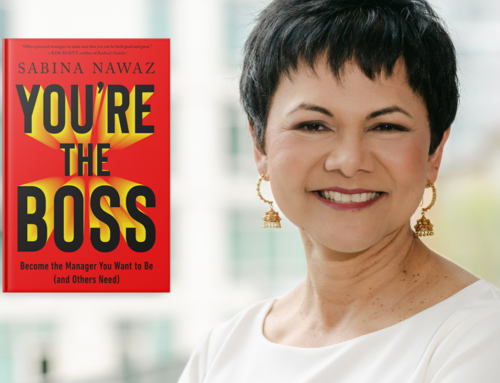After an opening that grabs your audience and doesn’t let it go, the next most important moment in a presentation is the ending. That’s because we tend to remember best the last thing we hear. So if you want to knock ‘em dead, you’d better be prepared to have a killer close.
But most people find that creating such an ending is difficult. The easy part – if any part of a speech is easy – is the middle, where you’re holding forth on your expertise, presumably your favorite subject. If you want a standing ovation, though, and most speakers will confess to a secret yearning for one, then you have to say something that brings the audience to its feet.
That was the challenge facing President Obama yesterday as he gave his second inaugural address. How could he at once inspire the audience in the moment, give them something memorable, and wrap up the speech in a way that got favorable reviews from the pundits?
Following are 3 quick tips for ways to think about closing a speech. To see which option President Obama chose, read on.
1.Return to your opening. If you opened with a strong story, or even a great question or statistic, then audiences love the sense of closure that comes with a return to that beginning. Depending on the context, you may have to remind the audience of the story quickly, but then, give us the conclusion, or the “what happened after,” much like those headings that come up at the end of movies where they tell you what happened to the hero or the cause.
2. Take us in a new direction. If you’ve been giving a speech about, say, health outcomes in the inner city, take us 50 years in the future and describe the city reborn and reinvigorated. Give us a glimpse of a rosy future that will come about thanks to your ideas and expertise. Or take us back: remind us of how similar musical insights occurred when Beethoven was working on his 5th symphony. The point is to pull out, in cinematic terms, to that wide or long shot, that gives us a sense of perspective.
3. Give us something to do. Audiences are full of naturally active people, and asking them to sit for 45 minutes or an hour is asking them to commit an unnatural act. So let them turn some of that energy that’s been building up loose – give them something to do. Have them share with each other, commit to some goal, create an approximation of the new ideas you’ve been sharing, join some larger community. The key is to make this first step easy and fun. Once they get started, they’ll want to keep going. So it’s just a matter of pointing them in the right direction.
This is the option that President Obama chose – with an asterisk. That is, he picked the standard political version of an action step: the rhetorical action:
Let us, each of us, now embrace with solemn duty and awesome joy what is our lasting birthright. With common effort and common purpose, with passion and dedication, let us answer the call of history and carry into an uncertain future that precious light of freedom.
Rhetorical action is both loftier and safer than real action. Loftier, because it allows the speaker – as the President did here – to call us to something a bit fuzzy and imprecise, if grand (embrace with solemn duty and awesome joy?). Safer, because the imprecision allows us lots of wiggle room. We can feel like we answered the call without really doing anything. We felt like it, right? We embraced, answered, and carried – at least in our minds.
That’s the danger of rhetorical action. If you actually get the audience to undertake some small action you’ll greatly increase the likelihood that they remember and act on your message. That’s the opportunity that the President missed, but perhaps the moment was too grand to actually do anything!
So if you’re not giving your second inaugural (or even if you are), try one of these 3 ideas to make your speech closing more powerful – and maybe even marked with a standing ovation. Good luck!








Great post, Nick! My favourite speeches that grab my attention always have a story, which the presenter or speaker comes back to – I found them very interesting and engaging.
Thanks, Harry, for your comment. The art of returning to an opening story is an underused one, and one that deserves more notice, because it’s so satisfying for audiences, as you point out.
Some great ideas here Nick, simple and actionable. In the past this is an area I’ve struggled with and I think it’s because you feel all the hard work has been done and you kind of expect that it’s done its job. But of course you’re right, a movie with a poor ending leaves you dissatisfied and that’s often the thing that leaves a lasting impression. I’m much better at this now, but these ideas have really helped – thanks!
Go, Andrew — I expect to hear great things about your endings now:-)
Great article, you rock!!!
THanks, Richar!
Great as always Nick. This is the advice you gave me and it worked – perfectly. Re Obama’s speech, it was of course wonderful but here’s my criticism, which you allude to. He spoke to our “better selves” but not to our “higher selves”. I wanted something on the order of “Ask not what you can do for your country…” or “we have nothing to fer….” I agree that he missed the opportunity, but I also agree it was a pretty grand oration.
Hi, Ruth —
Great to hear from you! And thanks; I’m glad it worked….Agreed on Obama’s speech — he’s not going to launch a new Peace Corps or anything like it with this address.